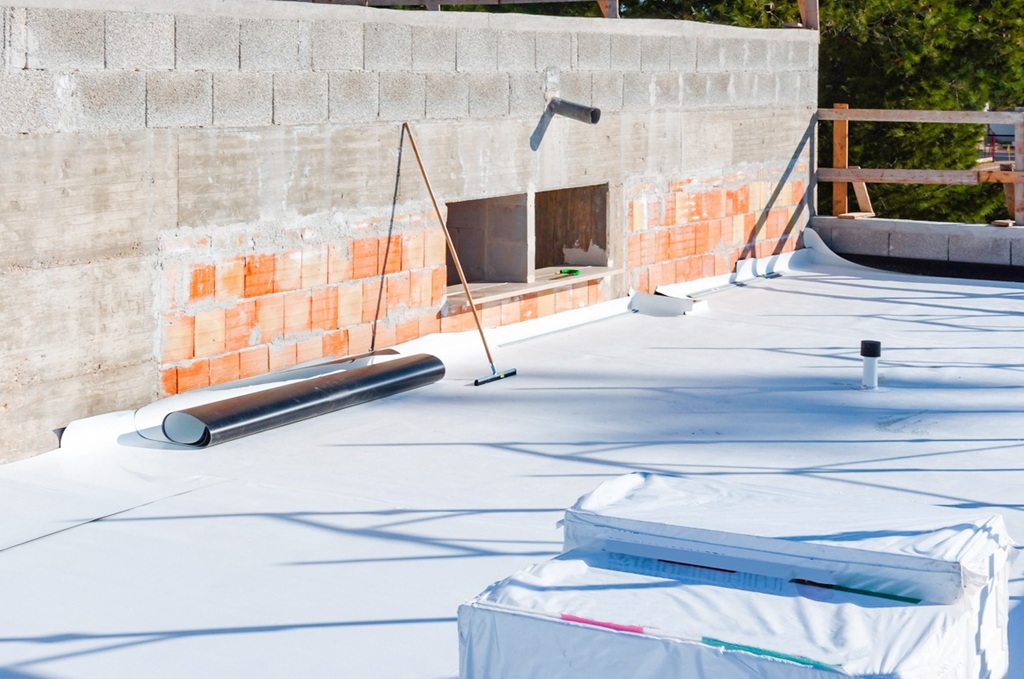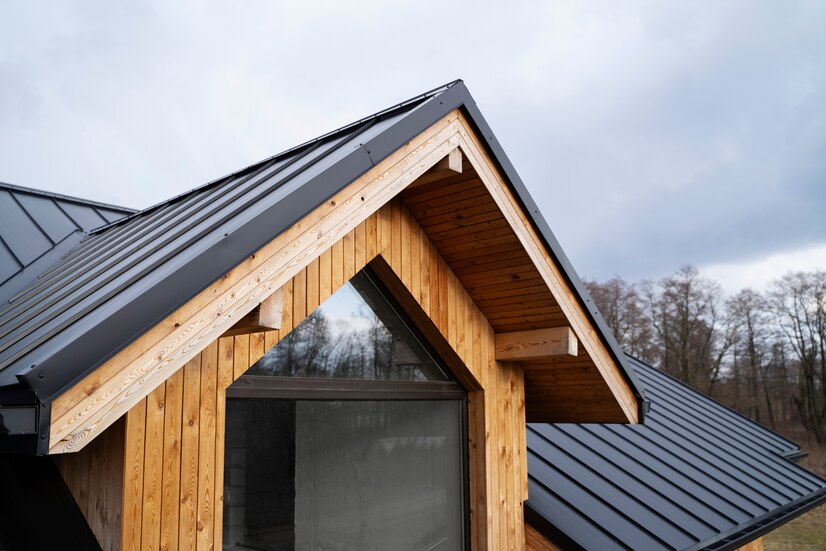In the dynamic world of commercial and industrial roofing, Thermoplastic Polyolefin (TPO) has emerged as a frontrunner, capturing the attention of building owners and contractors alike. Its blend of durability, energy efficiency, and cost-effectiveness has made it a popular choice for flat and low-slope roofs. But what exactly is TPO roofing, and why is it gaining so much traction? This comprehensive guide delves into the intricacies of TPO roofing, exploring its composition, benefits, installation, maintenance, and everything else you need to know to make an informed decision.
Understanding the Composition of TPO Roofing
TPO roofing is a single-ply roofing membrane composed of a blend of polypropylene and ethylene-propylene rubber. This unique combination creates a flexible yet robust material that can withstand the rigors of various weather conditions. The membrane typically consists of three layers: a TPO polymer base, a reinforcing fabric (often polyester), and a top layer that provides UV resistance and durability. The white or light-colored surface of most TPO membranes reflects sunlight, contributing to its energy-efficient properties.
The manufacturing process involves extruding the TPO polymer into sheets and then laminating the reinforcing fabric between the layers. This process ensures a uniform thickness and consistent quality across the entire membrane. The specific formulation of the TPO polymer can vary between manufacturers, leading to differences in performance characteristics. However, the core principles of flexibility, durability, and energy efficiency remain consistent.
The Myriad Benefits of TPO Roofing
TPO roofing offers a compelling array of benefits that make it a preferred choice for many commercial and industrial buildings.
- Energy Efficiency: The reflective white surface of TPO membranes significantly reduces heat absorption, leading to lower cooling costs during hot weather. This translates to substantial energy savings for building owners, particularly in warmer climates.
- Durability and Longevity: TPO is highly resistant to tears, punctures, and impacts, ensuring a long lifespan for the roofing system. It can withstand exposure to UV radiation, ozone, and various chemicals, making it suitable for harsh environmental conditions.
- Flexibility and Ease of Installation: TPO membranes are lightweight and flexible, making them easier to handle and install compared to other roofing materials. This can translate to faster installation times and reduced labor costs.
- Cost-Effectiveness: While the initial cost of TPO roofing may be slightly higher than some other single-ply options, its long lifespan and energy efficiency contribute to significant long-term savings.
- Environmental Friendliness: TPO is recyclable and does not contain harmful plasticizers, making it a more environmentally friendly roofing option.
- Resistance to Mold and Mildew: The smooth surface of TPO membranes inhibits the growth of mold and mildew, contributing to a healthier indoor environment.
- Welded Seams: Hot-air welded seams create a watertight seal, minimizing the risk of leaks and water damage.
Installation: A Critical Factor in TPO Roofing Performance
Proper installation is paramount to ensuring the longevity and performance of a TPO roofing system. Incorrect installation can lead to premature failure, leaks, and other problems.
- Substrate Preparation: The substrate must be clean, dry, and smooth to ensure proper adhesion of the TPO membrane. Any imperfections or debris can compromise the integrity of the roofing system.
- Membrane Attachment: TPO membranes can be attached using various methods, including mechanically fastened, adhered, or ballasted systems. The choice of attachment method depends on the specific project requirements and building design.
- Seam Welding: Hot-air welding is used to create strong, watertight seams between the TPO sheets. Proper welding techniques are essential to prevent leaks and ensure the long-term performance of the roofing system.
- Flashing and Detailing: Proper flashing and detailing around penetrations, edges, and corners are crucial to prevent water infiltration. Experienced contractors pay close attention to these details to ensure a watertight seal.
- Quality Control: Thorough quality control inspections are essential throughout the installation process to identify and address any potential issues.
Maintenance and Repair: Extending the Lifespan of Your TPO Roof
Regular maintenance is essential to maximize the lifespan of a TPO roofing system.
- Regular Inspections: Periodic inspections should be conducted to identify any signs of damage, such as punctures, tears, or seam failures.
- Cleaning: Regular cleaning can remove debris and prevent the buildup of mold and mildew.
- Prompt Repairs: Any damage should be repaired promptly to prevent further deterioration and leaks.
- Professional Maintenance: It is recommended to hire a qualified roofing contractor for regular maintenance and repairs.
Factors Affecting TPO Roofing Cost
The cost of TPO roofing can vary depending on several factors.
- Roof Size and Complexity: Larger and more complex roofs will generally cost more to install.
- Membrane Thickness: Thicker membranes tend to be more expensive but offer greater durability.
- Attachment Method: Mechanically fastened systems are typically less expensive than adhered systems.
- Labor Costs: Labor costs can vary depending on the location and the experience of the roofing contractor.
- Additional Features: Features such as insulation, flashing, and edge details can add to the overall cost.
Read More Also: How to Prepare for Painting the Outside of Your House
People Also Ask (FAQs) About TPO Roofing
Q: How long does TPO roofing last?
A: With proper installation and maintenance, TPO roofing can last between 20 to 30 years.
Q: Is TPO roofing energy efficient?
A: Yes, the reflective white surface of TPO membranes significantly reduces heat absorption, leading to lower cooling costs.
Q: Is TPO roofing environmentally friendly?
A: TPO is recyclable and does not contain harmful plasticizers, making it a more environmentally friendly roofing option.
Q: Can TPO roofing be installed over an existing roof?
A: In some cases, TPO roofing can be installed over an existing roof, 1 but it is essential to have a qualified roofing contractor assess the condition of the existing roof and determine its suitability.
Q: What are the common problems with TPO roofing?
A: Common problems include seam failures, punctures, and tears, which can be prevented with proper installation and maintenance.
Q: How do I choose a qualified TPO roofing contractor?
A: Look for a contractor with experience in TPO roofing installation, proper licensing and insurance, and positive customer reviews.
Q: What is the difference between TPO and EPDM roofing?
A: TPO is a thermoplastic polyolefin, while EPDM is a synthetic rubber. TPO is known for its energy efficiency and heat-welded seams, while EPDM is known for its durability and flexibility.
Q: Is TPO roofing suitable for all climates?
A: TPO roofing is suitable for a wide range of climates, but it performs best in warmer climates due to its reflective properties.
Q: What is the best TPO membrane thickness?
A: The optimal thickness depends on the specific project requirements and building design. Common thicknesses range from 45 mils to 80 mils.
Q: How do I repair a TPO roof?
A: Repairs should be performed by a qualified roofing contractor using compatible TPO materials and hot-air welding techniques.
Read More Also: My dear little cabin, white and very Nordic
Conclusion: TPO Roofing – A Smart Investment for Your Building
TPO roofing has solidified its position as a leading choice for commercial and industrial buildings, offering a compelling blend of energy efficiency, durability, and cost-effectiveness. By understanding the intricacies of TPO roofing, from its composition and installation to its maintenance and repair, building owners can make informed decisions that ensure the long-term performance and protection of their investments. Investing in a quality TPO roofing system, installed and maintained by experienced professionals, translates to a reliable, energy-efficient, and long-lasting roof that safeguards your building for years to come.






